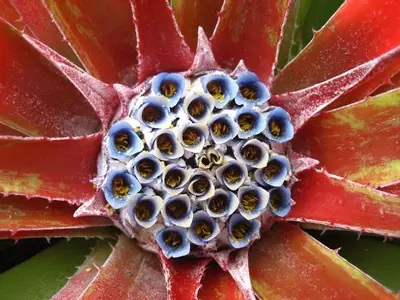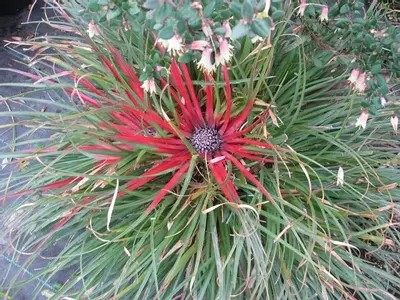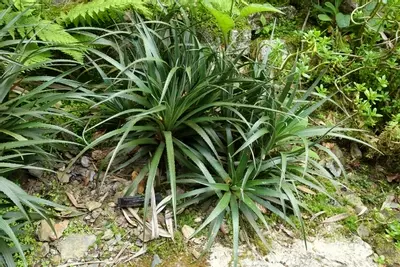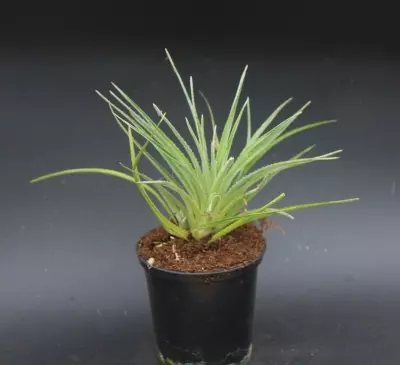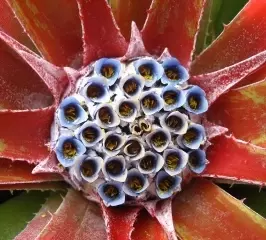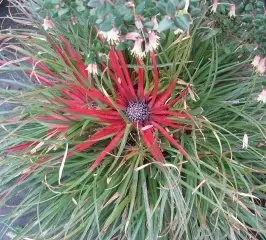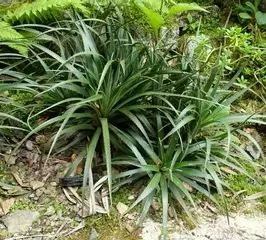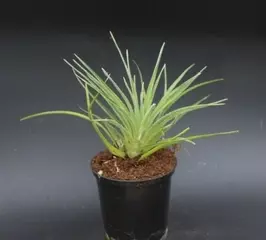Fascicularia bicolor Crimson bromeliad
FASC-BIC
- Description
This Chilean beauty is usually found growing in the ground, high up in the Andean mountains rather than in the rain forest tree canopy like many other bromeliads. Although usually a lithophyte it can sometimes be found growing as an epiphyte in its natural habitat.
Its origins make it reliably hardy through most of the UK and will tolerate all sorts of conditions except cold, overly wet soil during the winter. Plants grown in full sun usually have tougher leaves that are more grey green in colour forming rosettes of around 25 to 0cm across and have more spiny toothed edges. Plants grown in shade get much longer, softer, with less spines but do not flower so well as those grown in full sun.
The flowers are quite unusual and appear in dense clusters of pale blue individual blooms surrounded by white bracts. At flowering time the central leaves of the rosette take on a rich red colour that adds to the impact. Ideally grow in a well drained soil or if growing epiphytically wrap the roots in a thick layer of sphagnum moss before wiring to a tree branch. It also doe well growing out the sides of dry stone walls.Sent as a young plant in a 9cm pot.
Additional photos By hozdiamant - originally posted to Flickr as fascicularia #, CC BY 2.0, https://commons.wikimedia.org/w/index.php?curid=4120196,By peganum from Small Dole, England - Fascicularia bicolor & Correa Marion's Marvel, CC BY-SA 2.0, https://commons.wikimedia.org/w/index.php?curid=47472901,
- Position
- Flowering
- Growth

